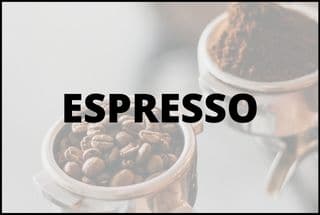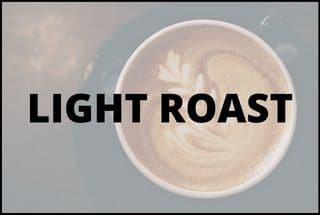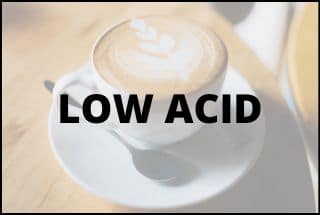Best Coffee Beans in 2022: Buyer’s Guide, Reviews, and Comparisons
While it’s true that you can make coffee with virtually any roast, you don’t want to settle for mediocre java. Using the best coffee beans will get you started on the right foot with brewing delicious coffee. Hence, rather than blindly picking a coffee that may disappoint, learn what goes into selecting the beans most suited for you. There’s a surprising amount of information that goes into determining coffee bean selection. Brew method, organic or not, and personal flavor preferences — it’s no wonder that it may seem overwhelming! Whether you’re practically a barista yourself or merely trying to figure out which coffee to try next, our list of favorite beans will point you in the right direction.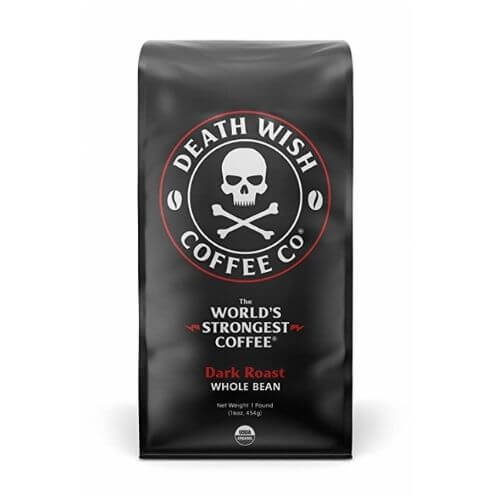
- Arabica and Robusta bean blend — provides a caffeine jolt
- Small batch roasting ensures quality
- Coffee beans are sourced mostly from India and Peru
Our Top Picks
| IMAGE | PRODUCT | DETAILS | ||
|---|---|---|---|---|
Best Organic Coffee Beans  | Best Organic Coffee Beans |
Features
| Check Price At Amazon Death Wish Review | |
Best Decaf Coffee Beans  | Best Decaf Coffee Beans |
Features
| Check Price At Amazon Kicking Horse Decaf Review | |
Best Espresso Beans 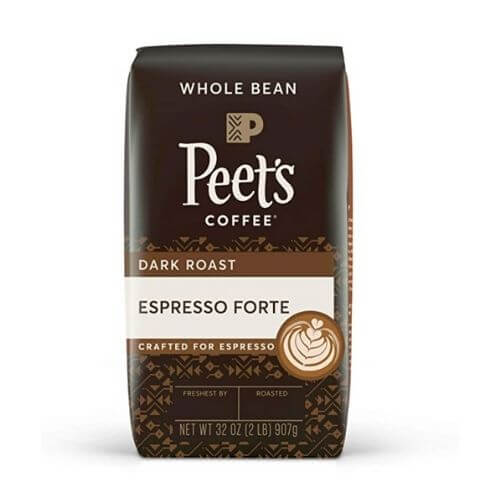 | Best Espresso Beans |
Features
| Check Price At Amazon Espresso Forte Review | |
Best Light Roast Coffee Beans  | Best Light Roast Coffee Beans |
Features
| Check Price At Amazon Caribou Daybreak Review | |
Best Medium Roast Coffee Beans  | Best Medium Roast Coffee Beans |
Features
| Check Price At Amazon Starbucks Medium Roast Review | |
Best Dark Roast Coffee Beans  | Best Dark Roast Coffee Beans |
Features
| Check Price At Amazon Subtle Earth Review | |
Best Low Acid Coffee Beans  | Best Low Acid Coffee Beans |
Features
| Check Price At Amazon Lifeboost Low Acid Review | |
Best Cold Brew Coffee Beans  | Best Cold Brew Coffee Beans |
Features
| Check Price At Amazon Stone Street Review | |
Best Instant Coffee  | Best Instant Coffee |
Features
| Check Price At Amazon Mount Hagen Review |
Best Coffee Beans in 2022: A Buying Guide
Making java at home is a practical way to cut back on your coffee shop expenses or test your barista skills. However, it comes with its own set of challenges — namely, what kind of coffee should you use? How do you determine what are the best coffee beans?
Deciding on the best coffee beans to use can be tricky. It’s not nearly as hard if you know what you already like, but there’s a lot of information to sort through if you’re a newbie. How good coffee tastes is obviously a major factor, but there are other elements that matter, too.
What’s more, good coffee doesn’t have to break the bank — there are some tasty best value coffee beans out there. However, when you’re deciding on a coffee, keep in mind certain points. Some of these aspects you should consider when looking for those perfect coffee beans include:
Roast
Brewing method
Type of coffee bean
Organic or not
Single-origin or blend
Where the beans are sourced
Coffee Beans Comparison
Organic Coffee Beans
Organic coffee is grown largely without the use of synthetic chemicals — where the farmers rely on natural means to fertilize, grow, and process coffee. Strict guidelines and regulations must be followed for a farm to be certified organic. These coffee beans are often considered superior to conventional coffee beans.
Certification process is long and expensive.
Organic coffee is grown without the many chemicals used on conventional coffee plants.
Organic farming is better for the environment.
Decaf Coffee Beans
Decaffeinated coffee beans have had at least 97 percent of the caffeine removed before roasting. The most common methods used are the Swiss water process, solvent-based processing, and carbon dioxide processing. Decaf coffee retains most of the nutrients and antioxidants found in coffee, although the taste may be slightly affected.
Decaffeination occurs after the coffee is picked and processed, but before the beans are roasted.
Swiss water process is the preferred method for decaffeination, but it’s time-consuming.
Decaf coffee may still contain small amounts of caffeine.
Espresso Coffee Beans
Although some coffee beans are labeled as espresso beans, the reality is that they aren’t any different from others. Some roasters have created specific roasts for espresso, and that’s often where the connection comes from. These beans are often dark roasted and create a brew that’s rich, dark, and potent.
Espresso coffee beans get their name because of the method of brewing, not the beans themselves.
Dark and medium-dark roasted beans are best suited for espresso.
Oily beans are best for espresso — oil is required for crema to form on top.
Light Roast Coffee Beans
Light roasted coffee beans are roasted for a shorter amount of time and at a lower temperature than darker roasts. These beans brew coffee that has a crisp and bright flavor, often tasting of fruit or flowers. And, because the beans haven’t been roasted for long, they retain some of their origin flavors.
Beans are light brown, with a matte surface.
This roast has the least bitterness.
Can be somewhat more difficult to brew properly.
Medium Roast Coffee Beans
Roast for longer than light roast, but shorter than dark and you end up with a medium roast coffee. They’re usually medium brown in color, and the bean surface isn’t shiny, as the oils are contained within. Medium roast coffee is one of the most popular roasts in the US, as it works well with almost any brewing method.
Richer in taste than light roast, but still may have traces of the origin flavors.
Medium roast coffee is slightly sweeter than light roast.
The aroma is pleasant, but not overwhelming.
Dark Roast Coffee Beans
Dark roast coffee beans are roasted the longest, to the point of almost being charred in some cases. These beans are often associated with espresso, and they have rich, robust flavors and aromas. The beans are oily, shiny, and very dark brown to black.
Flavors of dark roast coffee are smoky and strong.
Origin flavors are mostly roasted out, leaving only the smoky flavors of the beans themselves.
Dark roast coffee is sweet and often bitter.
Low Acid Coffee Beans
Low acid coffee beans brew java with less acidity than regular coffee. It’s better tolerated by people who have digestive or stomach issues. It also has a higher pH level that’s closer to neutral than most regular coffees. Cold brew is often less acidic than other forms of brewing.
Kinder on those with sensitive stomachs.
Lower acidity levels influence how the coffee tastes.
Light coffee roasts tend to be more acidic than dark roasts.
Cold Brew Coffee Beans
These beans are particularly well-suited for cold brew, which is made by steeping coarsely ground coffee in water for many hours. This coaxes more flavor out, while minimizing the acidic factor. Much like with espresso beans, roasters have created coffees solely for cold brew, using the attributes that complement each other best.
Cold brew needs coarsely ground coffee, water, and time. No special coffee makers or tricks.
Some coffees are created specifically for cold brewing.
This type of coffee is concentrated and should typically be diluted with milk or water.
Instant Coffee
Low acid coffee beans brew java with less acidity than regular coffee. It’s better tolerated by people who have digestive or stomach issues. It also has a higher pH level that’s closer to neutral than most regular coffees. Cold brew is often less acidic than other forms of brewing.
Because of the processing, instant coffee often has less caffeine than regular coffee.
Some drinkers have concerns about the chemicals used in making instant java.
Regardless of the criticism — instant coffee is real coffee.
Roast
What exactly is a coffee roast, and why does it matter?
You might not recognize coffee before it’s roasted. The beans are green, hard, and crunchy. Roasting is the process of heating green coffee to high temperatures, which transforms it into the brown beans that smell so fantastic.
During the roasting process, heat encourages fats, sugars, and starches to come out of the beans. These form the aromas and flavors you’ll smell and taste when the beverage is brewed. If the beans are lightly roasted, you’ll notice some flavors that were absorbed from the growing environment. However, as the roasting time increases, those origin flavors roast out and fade.
There are four principal roast levels to choose from. Whether you buy coffee beans online or in a store, you’ll know the lingo.
Light Roast
Light roasted coffee reaches an internal temperature of 356°F-401°F or 180°C–205°C. These coffee beans are roasted until the first crack — when the coffee bean literally cracks — and then removed from heat.
With a dull finish, light roasted beans don’t bear oil on their surface. Sometimes known as half city roast, light city roast, or cinnamon roast, light roast coffee has a milder taste but more acidity than others. And, as the beans aren’t roasted for very long, you can still taste flavors from the beans’ origin, such as fruit.
Medium Roast
Roasted until just before the second crack and enduring an internal temperature of 410°F-428°F or 210°C-220°C. Medium roast beans are medium brown in color, but still with no oil on the beans’ surface. You may also hear them referred to as American roast or just regular roast.
This coffee has a somewhat stronger flavor than lighter roasts, but these flavors are balanced. Nutty and chocolate tastes are common, and you can use virtually any brewing method.
Medium-Dark Roast
Medium-dark roasted coffee has been roasted to at least the second crack or slightly beyond. These beans hit an internal temperature of 437°F-446°F or 225°C-230°C. With a dark and rich brown color, some oil is present on the surface of medium-dark coffee beans.
Also going by the name of full city roast, Viennese roast, or continental roast, medium-dark roasted coffee has a more full-bodied and richer flavor than medium roasted coffee. Dark chocolate is a prevalent flavor, and this coffee has less acidity than lighter roasts. It also bears an aftertaste that can be slightly bittersweet.
Dark Roast
Dark roast coffee beans are roasted the longest, typically to the end of the second crack, but before the third. These beans reach an internal temperature of 464°F-482°F or 240°C-250°C and are the darkest, even coming close to being charred. You’ll notice their shiny and oily texture and appearance.
You may hear dark roasted coffee also referred to in espresso beans reviews as espresso, French, or Italian roast. These beans have been roasted so long that you typically can’t detect any flavors from their growing environment. Dark roast coffee is often bitter but possesses the least acidity of any roast. With a heavy body and mouthfeel, it does carry a sweeter flavor thanks to the sugars having more time to caramelize.
Brewing Method
There are so, so many ways of brewing coffee, and there’s no right or wrong way to do it. To prove it to you, here’s a quick summary of the most popular java brewing methods:
- Espresso — uses pressure to force water through coffee grounds to brew concentrated, rich coffee.
- French press — grounds are immersed in water and then pressed to extract the flavor.
- AeroPress — water is forced through ground coffee by slowly pressing the grounds.
- Pour-over — water is manually poured over ground coffee to brew coffee.
- Cold brew — coffee grounds are steeped in cold or room temperature water for 12-24 hours.
- Drip coffee — the most common method of brewing, hot water is dripped over ground coffee in a filter.
- Moka pot — hot water creates steam, which is forced through coffee grounds to brew coffee.
However, certain brewing methods have better results with certain kinds of coffee roasts. Thus, if you love a particular roast with great coffee bean ratings, then there are undoubtedly some brew methods to try out first.
- Light roast. A popular choice for cold brew coffee. Light roasts can take longer to extract the full flavor, compared to other roasts. Hence, the extended extraction time required for cold brew works well here.
- Medium roast. Anything goes with this roast. It’s suited to almost every brew method, particularly drip coffee. This is why most pre-ground coffee for drip coffee makers is of medium roast.
- Medium-dark roast. French press, espresso, and AeroPress are where this roast shines. Their short extraction times pair well with the coffee’s richness.
- Dark roast. When you think of the best beans for espresso, you likely imagine dark, rich coffee. However, dark roast coffee can turn bitter quickly if it’s over-extracted, so the rapid extraction time of espresso brewing is perfect for it.
Type of Coffee Bean
Coffee beans are not all created equal. They have different properties and flavors that affect how their brewed coffee tastes. There are actually four types of coffee beans — Arabica, Excelsa, Liberica, and Robusta. If you’re interested in the specifics, you can check out this guide. However, since Robusta and Arabica are predominantly used in coffee, we’ll stick with those right now.
Arabica
The most popular beans used throughout the world, Arabica are perceived to be of higher quality. The coffee plants flourish at higher elevations, but they can be more susceptible to weather and insects. This difficulty in growing means they typically cost more to produce.
Despite the expense, java brewed from Arabica beans tastes smoother and has more complex flavors. Arabica possesses less caffeine but higher acidity than most other coffee beans. However, their sugar content is greater, which leads to a sweeter taste. You’ll also often find floral or berry tasting notes in a beverage brewed from these beans.
Robusta
Robusta beans aren’t as expensive as Arabica, largely because they’re easier to grow. These coffee plants can be planted at lower elevations and are more resistant to weather and pests. They also produce fruit (coffee cherries) sooner than Arabica coffee plants.
Robusta beans contain more caffeine and provide better results when used as part of a blend, rather than on their own. Coffee brewed from Robusta beans typically has a harsher, more bitter flavor. However, that flavor is appreciated in espresso and even instant coffee. Combined with the extra caffeine boost, Robusta coffee beans can brew espresso with a punch! If you’re going to buy espresso beans online, look for what kind of beans are used.
Organic or Not
There’s an organic option for most food and drink now, so it’s no surprise coffee has followed suit. Organic coffee, along with most organic products, is considered to be healthier than conventional java.
Organic products typically haven’t been exposed to chemicals or man-made fertilizers, pesticides, or herbicides. It’s grown in a traditional, natural way — higher elevations, shade, and natural processing. In contrast, conventional coffee plants grow in full sunlight and often must be treated with chemicals to produce a good harvest. The way conventional coffee is grown can often damage the environment.
Some people are convinced that organic coffee tastes better, but taste is very subjective. It’s thought that organic coffee may absorb more flavors from its surrounding environment, without the masking of chemicals.
What’s more, organic certification is a costly process, so some farms may meet the standards, but haven’t been certified as such.
Single Origin or Blend
While it’s not important to some java drinkers, many people do prefer single-origin coffee over blended coffee or vice versa with top rated coffee beans. Yet, what’s the difference and why should you care?
Single Origin
Single-origin means all the coffee is sourced from a single location, gathered at the same time. It may be from the same farm or even the same crop. It’s considered to be the most authentic version, since it includes origin flavors from its surrounding environment.
The beans often have a brighter flavor than blends, and fruity or floral notes are common. However, the same aspects that make single-origin coffee attractive also mean that it can’t be precisely replicated over and over. The reason being, because growing conditions and the environment change over time. Hence, the coffee will be slightly different with each harvest.
Blend
Blended coffee can be replicated time and time again. Some blends use coffee beans from a single region, while others are from different countries. Roasters experiment with different combinations to develop the best flavors.
The final blend is an original combination of flavors, body, and acidity. Blends also tend to have more chocolate or nutty flavors. Some java aficionados may imply blends are inferior to single-origin, but ultimately, it comes down to personal preference. Drink what you enjoy!
Where the Beans Are Sourced
Where to get coffee beans from is another decision to make. Much like blends and single-origin coffees, it matters to some java lovers. Some people simply like knowing where their coffee comes from, while others may enjoy the flavor profiles associated with particular regions or countries.
- Africa — coffee is sweet, with fruity or floral tones. High acidity level.
- Asia — bold, earthy, and smoky coffee. It has a rich body but can be super bitter at times.
- South America — balanced flavors with tasting notes of chocolate, nuts, and caramel. Acidity is light to medium.
- Central America — coffee is smooth and balanced. Flavors include milk chocolate, light fruit, or brown sugar. Acidity varies.
Recapping
You can indeed brew java with virtually any kind of roasted coffee beans. However, there’s a big difference between coffee that’s decent and coffee that’s amazing. And, to brew the latter, you must start with amazing coffee beans. Use your grinder to transform those beans into the best ground coffee.
As we’ve discovered, there are many points to consider when looking for the best coffee beans, online or in-store. Where the beans originate, what type you prefer, and roast level all come into play when picking a coffee you’ll love. Plus, they’re better suited for certain brewing methods too.
What are the best coffee beans to buy? You definitely won’t go wrong with any of these best coffee beans on our list.
Best Coffee Beans FAQs
Where Are the Best Whole Bean Coffees From?
According to the National Coffee Association, it’s Colombia, with some of the best coffee beans in the world grown there. Excellent coffee beans also come from the Americas, Africa, the Arabian Peninsula, and Asia.
Where Can I Buy Coffee Beans?
Deciding where to buy coffee beans can feel like a minefield. To help you, why not check out our coffee bean comparison section. From there, you can navigate to our coffee bean reviews and narrow down your selection.
Which Coffee Bean Is Better, Arabica or Robusta?
Arabica beans are generally preferred over Robusta. Arabica creates flavors that are smooth and complex, compared to the more bitter taste of Robusta coffee. However, Robusta contains more caffeine and are often the best espresso beans.
Are Organic Coffee Beans Better?
In general, organic coffee beans can be considered healthier than conventional coffee beans. Organic coffee isn’t exposed to a large number of chemicals like conventional coffee plants. Some coffee lovers believe that organic also tastes better.
What Roast of Coffee Is Least Bitter?
Light roasted coffee. The longer coffee beans roast, the more bitterness can develop. Bitterness is more common with dark roast coffee, although medium and medium-dark roasts can also carry some bitter notes.
How Do I Choose the Right Coffee Beans?
Choosing the right coffee beans can be complicated. Look for quality coffee beans that have a solid reputation. Most importantly, the right coffee beans are those you enjoy drinking.
Can You Mix Robusta and Arabica Beans?
Yes, Robusta and Arabica coffee can be mixed into blends and often are! When blended, Arabica beans provide smoothness to the flavor, while Robusta beans add extra caffeine.
What Is the Most Popular Coffee Bean?
Arabica coffee beans are the most popular beans. These account for almost 60 percent of coffee bean production throughout the world.













